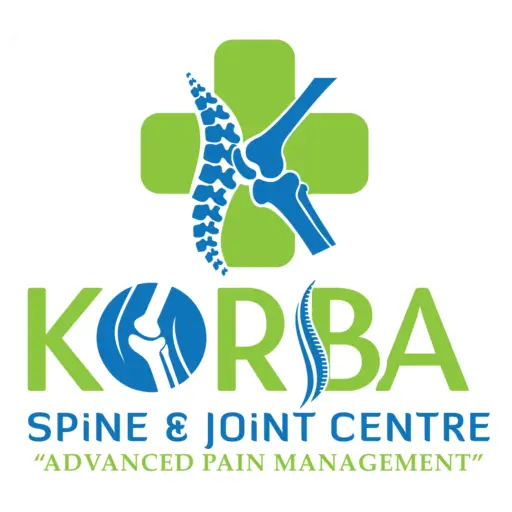What is Chronic Postural Syndrome?
Chronic Postural Syndrome refers to persistent pain or discomfort caused by poor posture maintained over prolonged periods. Unlike acute injuries, this condition develops subtly, often going unnoticed until the pain becomes severe. The affected areas are typically muscles, tendons, and soft tissues overstressed due to sustained, improper posture.
How Does Chronic Postural Syndrome Happen?
Poor posture places undue strain on certain muscles, leading to:
- Muscle Imbalance: Overstressed muscles weaken, while opposing muscles tighten.
- Reduced Blood Flow: Sustained pressure disrupts circulation to soft tissues.
- Overloading of Joints: Prolonged misalignment increases joint wear and tear.
- Nerve Impingement: Nearby nerves may become compressed, causing radiating pain.
When Does Postural Syndrome Happen?
It often develops during repetitive or static postures, such as:
- Sitting at a desk for hours.
- Long commutes in poorly designed car seats.
- Leaning forward while using smartphones or laptops.
- Standing improperly, with weight shifted unevenly.
Why Does Postural Syndrome Happen?
Factors contributing to this condition include:
- Lack of Awareness: Poor ergonomics at work and home.
- Sedentary Lifestyle: Reduced physical activity weakens postural muscles.
- Improper Sleeping Posture: Wrong mattress or pillow height can strain the spine.
- Stress: Leads to unconscious muscle tension.
Who is More Prone to Chronic Postural Syndrome?
Certain groups are at higher risk, including:
- Office Workers: Long hours at desks.
- Drivers: Extended periods in static postures.
- Students: Poor study habits.
- Elderly: Weakened core muscles and reduced mobility.
- Caregivers or Healthcare Workers: Repetitive bending or lifting.
Symptoms of Postural Syndrome
Common symptoms include:
- Pain Areas: Neck, shoulders, upper and lower back, hips, and knees.
- Aching or Stiffness: Especially after waking up or prolonged activity.
- Radiating Pain: Numbness or tingling in arms or legs.
- Headaches: Caused by tension in the neck and shoulders.
- Fatigue: Reduced physical endurance.
Differentiating Postural Syndrome from Systemic Disease Pain
While systemic diseases (e.g., arthritis, fibromyalgia) share symptoms, Postural Syndrome is distinguishable because:
- Pain worsens after poor posture but eases with activity or position changes.
- Systemic conditions often include swelling, fever, or unexplained weight changes.
Consult a physiotherapist to confirm the diagnosis.
Causes of Postural Syndrome
Primary causes include:
- Sedentary Habits: Weakens supporting muscles.
- Poor Ergonomics: Non-adjustable chairs, low desks, or incorrect screen height.
- Heavy Backpacks or Bags: Strain on shoulders and spine.
- Technology Overuse: Forward neck posture from smartphone use (“tech neck”).
Treatment Options for Chronic Postural Syndrome
Why is Physiotherapy Crucial?
Physiotherapy is the Gold Standard for Postural Syndrome. Unlike medication, which only masks symptoms, physiotherapy addresses the root cause.
How Physiotherapy Can Help
- Comprehensive Assessment: Identifies specific postural issues.
- Manual Therapy: Relieves tight muscles and restores joint mobility.
- Exercise Programs: Strengthen weak muscles and improve flexibility.
- Postural Education: Guides you on proper sitting, standing, and sleeping positions.
- Prevention: Physiotherapy ensures the pain doesn’t return.
Importance of Physiotherapy Over Medication
Medications may temporarily reduce pain, but without addressing the underlying cause, the pain is likely to return. Physiotherapy not only alleviates pain but also empowers you with tools and strategies for long-term relief.
Precautions to Avoid Postural Syndrome
- Ergonomic Workstations: Use adjustable chairs and desk heights.
- Frequent Breaks: Stretch or move every 30 minutes.
- Proper Sleep Setup: Invest in a good mattress and ergonomic pillows.
- Core Strengthening Exercises: Prevents imbalances.
- Maintain Active Lifestyle: Regular physical activity reduces stiffness.
Myths About Postural Syndrome
- Myth: “Posture doesn’t matter if I’m comfortable.”
Fact: Poor posture causes long-term damage even if initially painless. - Myth: “A good chair fixes posture issues.”
Fact: A good chair helps but isn’t a standalone solution. - Myth: “Stretching alone will fix it.”
Fact: A combination of strengthening, manual therapy, and lifestyle changes is essential.
Home Remedies
While professional care is ideal, you can try:
- Heat/Cold Therapy: Relieves muscle tension.
- Basic Stretches: Neck rolls, shoulder shrugs, and back extensions.
- Posture Correction: Use reminders to check your posture throughout the day.
- Yoga: Helps improve flexibility and balance.
Why Choose Physiotherapy for Postural Syndrome?
✅ Relieves pain effectively.
✅ Prevents future problems.
✅ Improves overall posture and mobility.
✅ Enhances quality of life.
💡 Ready to take the first step toward a pain-free life?
Know our Services
Stay Connected
👉 Follow us on Facebook: Korba Spine Clinic Facebook
👉 Watch Our Videos on YouTube: Korba Spine Clinic YouTube
Conclusion
Don’t let poor posture dictate your life! Chronic Postural Syndrome may seem minor, but without the right intervention, it can lead to severe complications. Physiotherapy is the ultimate solution—not just to treat but to prevent this condition. Take action now and consult a physiotherapist for lasting relief and an active, pain-free future.
